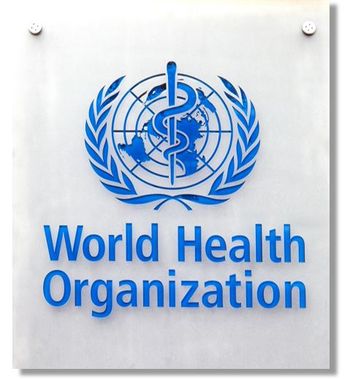Navigating the “Perfect Storm”: A COVID-19 Flu Season
The possibility of a flu season wrapped in a global pandemic may have health care professionals especially worried this year.
The headline of a recent editorial published in the journal
Navigating this perfect storm may have many health care professionals especially worried this year.
In a
One reason for this may be that the COVID-19 pandemic has already stretched the US health care system thin. As of
In addition, there is no reason to believe the 2020-2021 influenza season will be a mild one. The US Centers for Disease Control and Prevention
“To make matters worse, influenza and COVID-19 are both upper respiratory illnesses with similar presentations,” wrote Alex Evans, PharmD, in a recent
COVID-19: Flu-like, but not Quite
The
- COVID-19 and influenza can present with similar symptoms. Symptoms of COVID-19 and influenza include fever, cough, shortness of breath, fatigue, sore throat, runny or stuffy nose, muscle pain or body aches, headaches, and vomiting and diarrhea.
- For both COVID-19 and influenza, it could take ≥1 day for patients to experience symptoms; however, a person typically develops COVID-19 symptoms 5 days after being infected vs 1-4 days among influenza patients.
- Transmission similar, but level of severity differs. COVID-19 and influenza can spread from person-to-person, between people who are within 6 feet of each other, and both are spread mainly by viral droplets made when infected persons cough, sneeze, or talk. COVID-19, however, is thought to be more contagious among certain populations and age groups and it has been associated with more superspreading events vs influenza.
- COVID-19 contagious for longer vs influenza. It is possible for both COVID-19 and influenza patients to spread the virus for at least 1 day prior to experiencing symptoms, but it is possible for people to spread the virus that causes COVID-19 (SARS-CoV-2) for approximately 2 days before experiencing symptoms and remain contagious for at least 10 days after symptoms first appear.
On the topic of the dangers of COVID-19 and influenza circulating simultaneously, Evans also notes “the possibility of co-infection further increases the chances of misdiagnosis.”
How Likely is Coinfection?
“It is important for clinicians to understand that coinfection with influenza A or B viruses and SARS-CoV-2 can occur. This has been documented in multiple case reports and some case series,” stressed Timothy Uyeki, MD, MPH, chief medical officer, influenza division, National Center for Immunization and Respiratory Diseases, CDC, in a recent
Uyeki elaborated on the largest case series of patients coinfected with SARS-CoV-2 and influenza,
Low levels of coinfection have also been recorded in the US. For example, a study published in the April issue of
Uyeki added that there are several unknowns regarding COVID-19 and influenza coinfection, including frequency, severity, and risk factors.
Trouble with Treatments
The possibility of coinfection, in addition to distinguishing COVID-19 from influenza, is particularly important clinically because treating influenza patients as though they have COVID-19 may be harmful.
For example, a National Institutes of Health (NIH) clinical trial
In May,
The corticosteroid dexamethasone was
A preliminary report published in the July issue of
The
Although data from randomized controlled trials of corticosteroid treatment for influenza are not available, 2 meta-analysis of observational studies showed corticosteroid treatment in hospitalized patients with influenza was associated with increased mortality, according to the IDSA guidelines.
Testing Crucial in Distinguishing Between Viruses
Testing is going to be the key to differentiating between the viruses that cause influenza and COVID-19 in the coming months and to guiding appropriate, safe, and effective therapy.
When asked about the diagnostic challenge posed by symptom overlap between SARS-CoV-2 and influenza infection, Charles Vega, MD, family physician and clinical professor of health sciences in the department of family medicine at the University of California Irvine School of Medicine, told Patient Care Online in an interview:
Unfortunately, I wish there was a better way to clinically discriminate between influenza and COVID-19, but they just present way too similarly…we’re going to have to test broadly a lot of folks. That is why it is great that there was a test, a co-test, for influenza and COVID-19 approved.
In July, the
Since then, the FDA has
These rapid, dual diagnostic tests have several advantages because they work by testing a single patient sample.
“Taking just one sample from a patient may help alleviate the need for multiple samplings, which means less discomfort for the patient with faster and more comprehensive results. In addition, combination tests require fewer supplies, such as swabs and personal protective equipment, and reduce pressure on the supply chain for reagents,” said FDA commissioner Stephen M Hahn, MD, in a July 2, 2020
The EUAs may be granted, but immediate availability may not be widespread. Laboratories and health care professionals must take
For example, laboratories may be influenced by local prevalence of influenza and COVID-19 or availability of supplies required to run the dual diagnostic tests. Health care professionals may need to consider how quickly they need a diagnosis or whether an individual test is more appropriate based on presenting symptoms and medical history.
Can COVID-19 Control Measures Curb Flu Spread?
Not all health care professionals are equally worried about the possibility of an influenza season wrapped in a global pandemic.
When asked his thoughts on influenza season colliding with COVID-19, NIH-funded infectious disease expert Rodger MacArthur, MD, told
“I say that because now that more and more of us are wearing masks and practicing social distancing, it's quite likely that that will have a benefit in reducing the spread of influenza as well as the documented benefit of reducing the spread of COVID-19,” explained MacArthur, professor of medicine, Division of Infectious Diseases, Office of Academic Affairs, Medical College of Georgia at Augusta University.
Intuitively, it makes sense that practicing social distancing and wearing masks would minimize the spread of not only COVID-19, but other circulating respiratory diseases as well.
A September 18, 2020
In the US, between September 29, 2019-February 29, 2020 and March 1-May 16, 2020, there was a 98% decrease in influenza activity (as measured by percentage of submitted specimens testing positive). Interseasonal circulation of influenza (May 17-August 8, 2020) was historically low with a median 0.20% of positive tests in 2020 vs 2.35% in 2019, 1.04% in 2018, and 2.36% in 2017.
Data from Australia, Chile, and South Africa also showed very low influenza activity during the typical Southern Hemisphere influenza season, from June to August 2020, the CDC report added.
“The use of community mitigation measures for the COVID-19 pandemic, plus influenza vaccination, are likely to be effective in reducing the incidence and impact of influenza, and some of these mitigation measures could have a role in preventing influenza in future seasons,” said the agency. “However, given the novelty of the COVID-19 pandemic and the uncertainty of continued community mitigation measures, it is important to plan for seasonal influenza circulation in the United States this fall and winter.”
Patients Still Need Flu Shots during COVID-19
While some patients can be resistant to receiving the influenza vaccine in non-pandemic years, getting vaccinated is more important than ever this upcoming season to not only protect patients from becoming infected, but to also help reduce the strain on health care systems during COVID-19.
According to the CDC, during the 2018-2019 influenza season,
Family physician Vega put it this way: “My singular line to folks this year, is: ‘Is this the year, of all years, that you want to wake up on say a Tuesday night and you have a fever of 101 and a cough?’” explained Vega. “Besides our traditional public health instructions in terms of distancing and masking and washing hands, we can't do much to prevent COVID-19. But we can absolutely have a much more proactive way to prevent influenza.”
Newsletter
Enhance your clinical practice with the Patient Care newsletter, offering the latest evidence-based guidelines, diagnostic insights, and treatment strategies for primary care physicians.


















































































































































































































































































